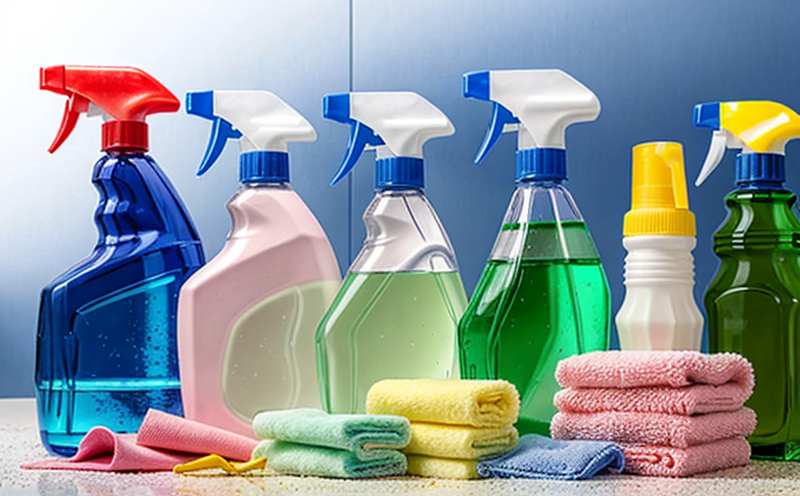Formaldehyde Content Testing in Detergents
In today’s consumer product industry, ensuring safety and compliance is paramount. Formaldehyde content testing plays a critical role in safeguarding public health by identifying potentially harmful levels of formaldehyde in cleaning products and detergents.
Formaldehyde is widely used as an antimicrobial agent in various household items, including detergents, fabric softeners, and personal care products. However, its presence can pose risks if not adequately controlled. Regulatory bodies such as the U.S. Environmental Protection Agency (EPA) have set limits to prevent adverse effects from prolonged exposure.
This service involves a detailed analysis of formaldehyde content, ensuring that all consumer products meet stringent safety standards. Our laboratory utilizes advanced techniques and state-of-the-art instrumentation to provide accurate and reliable results. The testing process is comprehensive, encompassing sample preparation, extraction, quantification, and reporting.
Sample preparation typically involves dissolving the detergent or fabric softener in a suitable solvent before proceeding with extraction methods like solid-phase microextraction (SPME). Once extracted, the formaldehyde content is analyzed using high-performance liquid chromatography (HPLC) coupled with fluorescence detection. This method ensures precise quantification and accurate reporting.
The testing process adheres to international standards such as ISO 14976:2008 and ASTM D5312-10, which provide guidelines for formaldehyde content determination in textile finishing agents. Compliance with these standards is essential for ensuring product safety and regulatory adherence.
Our laboratory offers a full suite of testing services beyond just formaldehyde content analysis. We also perform comprehensive microbiological assessments to ensure that the products do not pose any microbial risks. This multi-faceted approach ensures that our clients receive a holistic understanding of their product’s safety profile.
| Standard | Description |
|---|---|
| ISO 14976:2008 | Methods for the Determination of Formaldehyde in Textile Finishing Agents. |
| ASTM D5312-10 | Standard Practice for Sampling and Preparation of Textiles for Chemical Analysis. |
Applied Standards
The testing process for formaldehyde content in detergents is regulated by several international standards. These include ISO 14976:2008, which specifies methods for the determination of formaldehyde in textile finishing agents, and ASTM D5312-10, which provides guidelines for sampling and preparation of textiles for chemical analysis.
| Standard | Description |
|---|---|
| ISO 14976:2008 | Methods for the Determination of Formaldehyde in Textile Finishing Agents. |
| ASTM D5312-10 | Standard Practice for Sampling and Preparation of Textiles for Chemical Analysis. |
Benefits
- Ensures compliance with international safety regulations, enhancing brand reputation.
- Avoids legal issues and potential product recalls by identifying formaldehyde content early in the production process.
- Safeguards consumer health by eliminating potentially harmful products from reaching the market.
- Provides detailed insights into product performance and ingredient efficacy.
Environmental and Sustainability Contributions
- Reduces waste by ensuring only safe and effective products are released to the market.
- Promotes sustainable practices in manufacturing, contributing to a healthier environment.
- Supports circular economy principles by preventing the release of harmful chemicals into the ecosystem.





